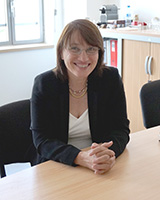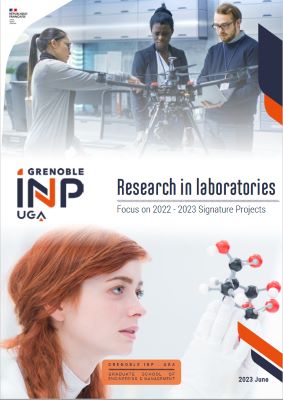 The Hydro’like chair, inaugurated in early October, is the foundation of a cluster to strengthen the collaborative action in the Grenoble area in the field of hydraulic machines. This centre of excellence will allow us to strengthen and sustain our foothold in the Rhône-Alpes region through the increase of our activity and our R&D cooperation towards more upstream research fields. This research is essential to maintain the competitiveness of French products with regard to heightened competition from emerging countries. Despite its position as the market leader, Alstom will not be able to remain amongst the bests on its own. In order to foster innovation, we have to establish sound relationships with academic partners. By way of example, we have been working with Grenoble INP for a long time and several theses and joint projects are underway under the aegis of competitive clusters. Recent examples include the e-storage project aimed at developing a solution for the economically-viable integration of intermittent renewable energy sources such as wind power in the power grid, by replacing the fixed-speed PSPS with variable-speed PSPS. These tests are carried out at CREMHyG. In addition, we recruit graduates from all schools in the Grenoble INP group which has been able to adapt to the expectations of industrial manufacturers and which has improved its standing in the international rankings.
The Hydro’like chair, inaugurated in early October, is the foundation of a cluster to strengthen the collaborative action in the Grenoble area in the field of hydraulic machines. This centre of excellence will allow us to strengthen and sustain our foothold in the Rhône-Alpes region through the increase of our activity and our R&D cooperation towards more upstream research fields. This research is essential to maintain the competitiveness of French products with regard to heightened competition from emerging countries. Despite its position as the market leader, Alstom will not be able to remain amongst the bests on its own. In order to foster innovation, we have to establish sound relationships with academic partners. By way of example, we have been working with Grenoble INP for a long time and several theses and joint projects are underway under the aegis of competitive clusters. Recent examples include the e-storage project aimed at developing a solution for the economically-viable integration of intermittent renewable energy sources such as wind power in the power grid, by replacing the fixed-speed PSPS with variable-speed PSPS. These tests are carried out at CREMHyG. In addition, we recruit graduates from all schools in the Grenoble INP group which has been able to adapt to the expectations of industrial manufacturers and which has improved its standing in the international rankings.Maryse François-Xausa, Vice President of R&D at Alstom Renewable Power
SUMMARY
- Imagining the hydraulic machines of the future
- Hydroelectricity: an energy of the future
- Innov'hydro: a multi-disciplinary project
- "We will not be the best on our own"
- Tidal turbines in rivers and at sea
- LCIS transforms RFID labels into sensors
- Micro hydropower plants to provide rural areas with electricity





